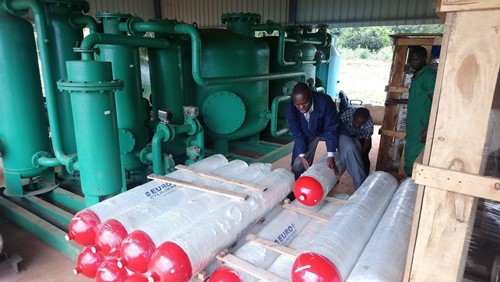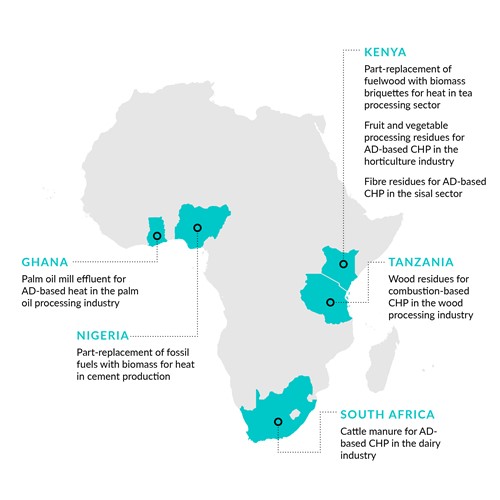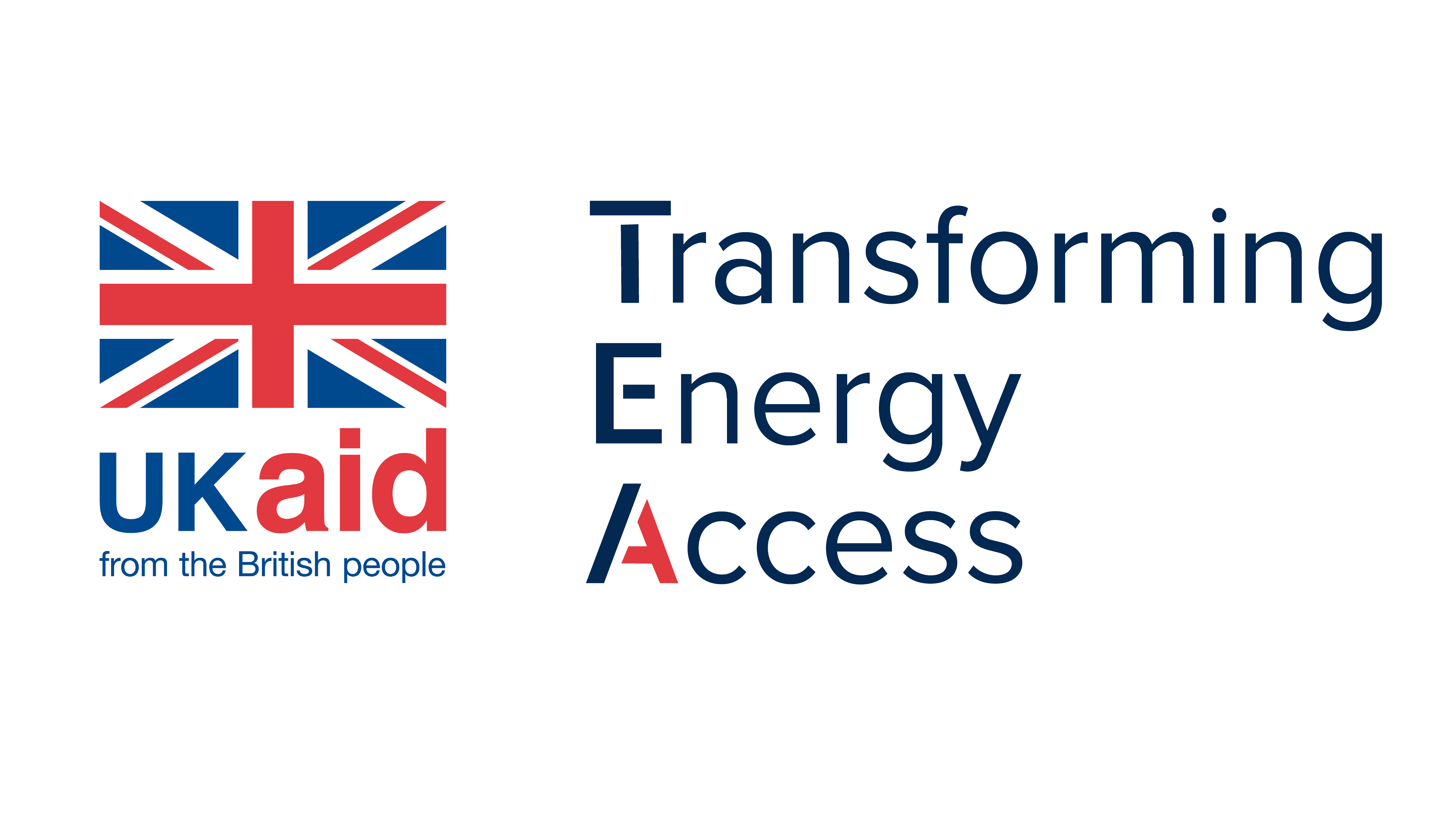Context
Sub-Saharan Africa has a huge variety of bioenergy feedstocks with an enormous potential to meet Africa’s burgeoning demand for modern energy services. Making more effective use of biomass-based energy can play an important role in improving energy access. Given that biomass feedstocks are closely related to agricultural practices and land use, suitably designed bioenergy investments have the potential to improve agricultural productivity, localise energy supply, reduce greenhouse gas (GHG) emissions, reduce deforestation, generate supply chain economic activities, deliver social benefits and empower poor communities.
However, bioenergy development has been extremely constrained with a low success rate of commercial deployment in Africa. Key barriers to its commercial utilisation span various aspects covering biomass resource, technology, economics, finance and institutional and regulatory frameworks.
 Biogas purification and bottling plant at Olivado (EPZ) Ltd,
Biogas purification and bottling plant at Olivado (EPZ) Ltd,
Murang’a County, Kenya (credit: Hannes Muntingh)
Biomass resource related barriers include high dispersal, poor supply infrastructure and high sourcing costs. Technical barriers to conversion include insufficient understanding amongst local players of feedstock-technology fit and a lack of technologies tailored to African contexts. Financial barriers include inadequate or non-existent supply chains, high costs of pre-treatment and conversion, and insufficiently robust and tested business models. Institutional barriers meanwhile include inadequate understanding of interfaces between different supply chain stages and actors, alongside unfavourable institutional and regulatory frameworks.



 Biogas purification and bottling plant at Olivado (EPZ) Ltd,
Biogas purification and bottling plant at Olivado (EPZ) Ltd, 






















